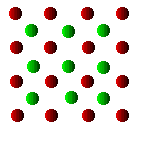

Thanks to the work of scientists like Boyle, Charles, and Gay-Lussac, it became clear that what we call heat was dependent upon the amount of motion in the molecules of a substance. Given a fixed amount of matter, the more the molecules moved, the more heat was contained within the substance.
Through the use of statistics, it was determined that in a given
group
of molecules, there would be a distribution of molecular speeds from
relatively
slow to relatively fast, Most of the molecules would have speeds
close
to the average for the group. The kinetic energy of this average
speed
is know as temperature.
It was observed that when the temperature increased, the graph of the molecular speeds shifted to the right. This means that more molecules have a higher kinetic energy than before the temperature rise. Higher kinetic energy allows chemical reactions to take place more quickly.
While the new kinetic theory of heat explained many things, it only worked in perfect situations, and at lower temperatures. Scientists then set up an artificial condition called a black body to better help predict the analysis of heat and kinetic energy of much hotter objects, like stars. A blackbody would absorb all radiation hitting it, so any light given off would be from its temperature.
Higher temperatures resulted in radiation of higher frequency, or shorter wavelength. To see what effect a rise in temperature would have on color, click the lowest right scroll arrow below. To see a drop in temperature, click the lowest left arrow.
Close This Window To Return to Lesson
![]() The Science Museum of
Virginia
The Science Museum of
Virginia
| Mail comments, questions or suggestions to: outreach@ssl.berkeley.edu | |
| OR Web Curators. |
Copyright © 1997 Regents of the University of
California. All rights reserved.
This page last updated 06/25/02